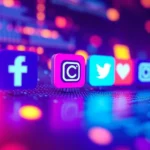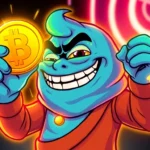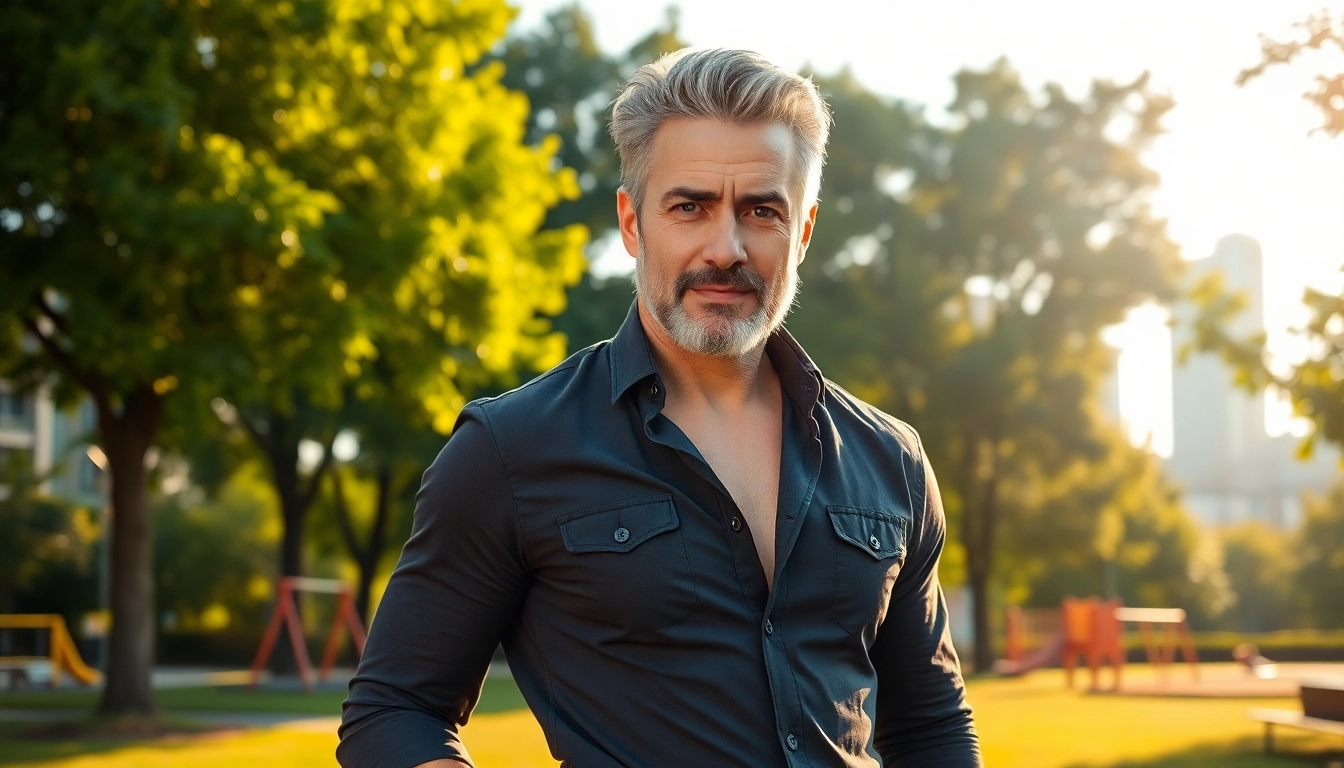Defining DILF: Origin and Meaning
The term dilf is a colloquial acronym that stands for “Dad/Daddy I’d Like to Fk.” It’s used primarily in pop culture and internet slang to describe an older, mature man who exudes attractiveness and sexual appeal. Interestingly, a man doesn’t necessarily need to be a father to be called a dilf; the term often emphasizes a certain combination of maturity, confidence, and physical appeal that resonates with many. Unlike its counterpart, MILF , which gained popularity through films like American Pie, dilf entered the vernacular as a humorous yet admiring way to acknowledge the allure of older men who embody the “dad” archetype—whether or not they have children.
The origin of the term is rooted in internet culture and was popularized alongside the rise of the MILF phenomenon. The initial usage was often humorous, sometimes pejorative, but over time it evolved into a more mainstream compliment. Today, dilf is used both in casual conversations and in media to refer to men who combine masculinity, maturity, and attractiveness. It emphasizes qualities like confidence, a strong physique, and an aura of experience that many find appealing. The term’s playful yet respectful tone reflects society’s growing appreciation for older, confident men who defy traditional standards of youthful attractiveness.
Cultural Significance and Popularity
The cultural relevance of dilf has skyrocketed in recent years, thanks in part to its incorporation into movies, television series, and internet communities. It embodies a shift in societal perceptions about aging and attractiveness, challenging the notion that youth is the only measure of desirability. Instead, it celebrates the appeal of older men who exude confidence, charm, and a sense of stability.
Popular culture has embraced the dilf archetype, often portraying the character as the quintessential “older, attractive man.” From Hollywood to streaming platforms, the image of the dilf has become synonymous with a certain ideal of masculinity—mature, protective, and undeniably appealing. This cultural shift reflects a broader societal trend towards appreciating diversity in attractiveness and breaking ageist stereotypes. The term also functions as a form of empowerment, allowing older men to reclaim their sexuality and attractiveness publicly.
DILF in Movies, TV Shows, and Gaming
Films and Television
The portrayal of dilfs in media has evolved over the years, with notable examples helping to cement the term in popular consciousness. One of the earliest instances is in American Pie Presents: The Book of Love (2009), a film that, like its predecessor, popularized the concept of a dilf through the character of Rob’s father. This character exemplifies the archetype: older, attractive, and with a certain rugged charm. The film’s portrayal of the father figure as sexually appealing played a role in normalizing the term within mainstream culture.
Another prominent example is the Netflix series Riverdale, which debuted in 2017. The character Fred Andrews, played by Luke Perry, became widely regarded by fans as a quintessential dilf. His portrayal as a caring, protective, and handsome father figure resonated with audiences, further elevating the archetype’s popularity. These media representations highlight how the dilf has become a symbol of mature masculinity that combines emotional depth with physical attractiveness.
In Video Games and Pop Culture
The influence of the dilf archetype extends beyond traditional media into gaming and online fandoms. For example, in the popular role-playing video game Baldur’s Gate, a character named Daddy Halsin has garnered a significant following. Fans affectionately refer to him as Daddy Halsin because of his protective and strong personality, paired with a rugged, attractive appearance. His character embodies many traits associated with the dilf archetype—maturity, strength, and an undeniable charisma.
This crossover into gaming culture demonstrates how the dilf archetype resonates across different entertainment mediums, appealing to diverse audiences who appreciate masculinity blended with maturity. It also highlights how the concept has become embedded in fan communities, often celebrated through memes, fan art, and online discussions.
Internet Trends: DILFs of Disneyland and Online Communities
Social Media and Internet Communities
The internet has played a pivotal role in amplifying the dilf phenomenon. One notable example is the Instagram account DILFs of Disneyland, which boasts over 300,000 followers. This account features photos of men at Disneyland, happily spending time with their families, showcasing that these attractive, mature men are also everyday dads enjoying family life. The account celebrates the relatable, wholesome side of dilfs, blending attractiveness with approachability and demonstrating that being a dilf isn’t just about looks but also about personality and lifestyle.
Similarly, online communities like r/DILFs on Reddit have cultivated a space where enthusiasts share pictures, discuss traits, and celebrate the appeal of dilfs. With nearly 100,000 members, this community underscores how the concept has become a cultural phenomenon, with fans appreciating the diversity and charisma of older men. These platforms serve to normalize and elevate the dilf archetype, showing that attractiveness isn’t confined to youth but can be found across age groups.
The Role of Humor and Respect
Online trends often blend humor with admiration. Many memes and posts playfully highlight the qualities that make dilfs appealing, often emphasizing traits like confidence, humor, and maturity. This lighthearted approach helps destigmatize aging and promotes a more inclusive understanding of attractiveness. Nevertheless, these communities also foster genuine respect for men who embody the dilf archetype, recognizing that attractiveness is multifaceted and deeply subjective.
The Evolution of the Term: From Humor to Admiration
Initially, the term dilf emerged within internet humor, often used jokingly or pejoratively. Over time, however, societal perceptions shifted, and the term gained respectability. Today, calling someone a dilf is often a compliment, acknowledging their maturity, style, and attractiveness.
This evolution mirrors broader societal changes, including increased appreciation for aging and diverse gender roles. The term now carries a sense of admiration rather than mere jest, reflecting a cultural embrace of older men as desirable, attractive, and confident. It also contributes to challenging stereotypes that associate aging with decline, instead highlighting vitality and allure.
Why DILFs Are Attractive: Traits and Characteristics
Physical Attributes
At the core of the dilf archetype are physical features that exude masculinity and maturity. These often include a well-maintained physique, facial features that suggest experience and confidence, and an overall demeanor that radiates strength and stability. Many dilfs are depicted with a rugged charm—stubble, salt-and-pepper hair, and a confident posture—that enhances their appeal.
Personality Traits
Beyond physical appearance, dilfs are often characterized by traits such as confidence, emotional maturity, humor, and protectiveness. They are perceived as reliable and capable, embodying qualities that make them desirable partners or role models. Their life experience adds an element of wisdom and depth, making them intriguing and attractive in social and romantic contexts.
Style and Presence
Style also plays a significant role in dilf attractiveness. Many are portrayed with fashion choices that emphasize their masculinity—like fitted shirts, leather jackets, or casual yet refined attire. Their presence often commands attention, not just through looks but through charisma and self-assuredness, making them stand out in any setting.
How DILFs Are Portrayed in Media and Pop Culture
Media Representation
Media portrayals of dilfs tend to emphasize their strength, kindness, and protective instincts. In movies and TV shows, they are often depicted as the “good guy” with a rugged exterior and a caring heart. Such characters challenge traditional notions of aging, showcasing that attractiveness and desirability are not limited to youth.
For example, in series like Riverdale, Fred Andrews is portrayed as a devoted father, handsome, and emotionally mature—embodying the dilf archetype. These portrayals help normalize the idea that older men can be just as desirable as their younger counterparts, influencing societal perceptions positively.
In Pornography and Adult Content
The dilf tag has become a popular search term within adult content, reflecting its rise in mainstream recognition. This has led to a proliferation of content that emphasizes the appeal of mature, attractive men. The term’s popularity in adult entertainment underscores its significance as a cultural marker of desirability that transcends age stereotypes.
The Impact of DILF Culture on Dating and Society
Redefining Attractiveness
The dilf phenomenon has contributed to a broader redefinition of attractiveness, emphasizing confidence, maturity, and personality over youth alone. This shift allows older men to feel more confident about their sexuality and attractiveness, challenging ageist stereotypes prevalent in society.
Implications for Dating Dynamics
In the dating scene, dilf culture influences preferences and expectations. Younger individuals increasingly appreciate the qualities associated with dilfs—wisdom, stability, and experience—leading to more diverse dating patterns. This dynamic fosters a society where attractiveness is recognized across age groups, promoting inclusivity and mutual respect.
Societal Perceptions and Gender Roles
The rise of dilf popularity also reflects changing gender roles, with men asserting their sexuality and attractiveness regardless of age. It fosters a cultural environment where aging is seen as a phase of continued desirability and vitality. This evolution contributes to breaking down stereotypes about aging, masculinity, and attractiveness.
Future Trends: The Continued Rise of DILF Popularity
Looking ahead, the dilf archetype is poised for continued growth in popularity. As societal attitudes toward aging and attractiveness evolve, the appreciation for mature men will likely expand. Media portrayals will probably feature more diverse and nuanced dilf characters, emphasizing personality, style, and emotional depth.
Additionally, online communities and social media platforms will sustain and amplify this trend, creating spaces for fans and admirers to celebrate and discuss dilfs openly. The integration of the dilf concept into mainstream advertising, fashion, and entertainment suggests that it will remain a significant cultural marker for years to come.
Conclusion: Embracing the DILF Phenomenon
The dilf phenomenon encapsulates a broader cultural shift that celebrates the attractiveness, confidence, and allure of older men. From movies and TV shows to internet communities and social media, the archetype has evolved from a humorous label into a symbol of desirability that defies ageist stereotypes. It emphasizes that attractiveness is multifaceted—combining physical appearance, personality, and charisma—and that aging can be synonymous with vitality and sex appeal.
As society continues to embrace diverse standards of beauty, the dilf archetype will likely grow in prominence, offering a more inclusive view of masculinity and attractiveness. Whether in media, online communities, or everyday life, dilfs represent a celebration of maturity, strength, and confidence—qualities that remain eternally appealing. Recognizing and appreciating these traits helps foster a more accepting and open society, where aging is not a barrier to desirability but a badge of experience and charm.








